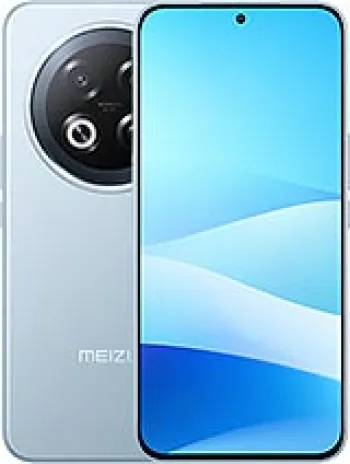
Overview
The Meizu M1 Note was a significant addition to Meizu's line of smartphones, representing a blend of performance and affordability. Released in early 2015, this device stood out for its impressive features that appealed to a wide range of users, especially in markets that value budget-friendly alternatives to flagship smartphones.
Design and Build
The Meizu M1 Note boasted an eye-catching design with dimensions measuring 150.7 x 75.2 x 8.9 mm and a weight of 145 g. Its slim form factor made it comfortable to hold, and its striking polycarbonate body came in a variety of colors including white, blue, yellow, green, and pink. The dual SIM capability allowed users to manage two phone numbers simultaneously, a valuable feature for both business and personal use.
Display
The device featured a 5.5-inch IGZO IPS LCD display, offering a full HD resolution of 1080 x 1920 pixels, which translated to a high pixel density of approximately 403 ppi. The screen's vividness and clarity were further enhanced by Corning Gorilla Glass 3 protection, ensuring durability against scratches and accidental drops. This made it an excellent choice for media consumption, gaming, and reading.
Performance
Under the hood, the Meizu M1 Note was powered by a Mediatek MT6752 chipset, a 28 nm octa-core processor clocked at 1.7 GHz Cortex-A53. Paired with a Mali-T760 GPU, the device delivered robust performance, handling multitasking and gaming with relative ease. The 2GB RAM further supported smooth operation, although heavier tasks could push its limits.
Operating System
Running on Android 4.4.4 KitKat with Meizu’s custom Flyme 4 UI, the M1 Note offered a user-friendly interface that was both intuitive and aesthetically pleasing. Despite being stuck on Android KitKat, Flyme introduced various enhancements that improved the overall user experience, introducing features like customizable themes, smart gesture controls, and a minimalist design approach.
Storage
The device was available in two internal storage options: 16GB and 32GB. Unfortunately, it did not support external memory expansion due to the absence of a microSD card slot, which could be a point of consideration for users needing more storage space for apps and media files.
Camera Capabilities
Photography was one of the Meizu M1 Note’s strong suits. It featured a 13MP rear camera with an f/2.2 aperture and autofocus. The camera supported dual-LED dual-tone flash, HDR, and panorama modes. It also recorded videos at 1080p@30fps, offering decent video quality. The 5MP front camera was efficient for selfies and video calls, providing clear and sharp image quality.
Battery Life
The device housed a non-removable Li-Ion 3140 mAh battery, which, according to Meizu, provided up to 40 hours of talk time and up to 60 hours of music playback. With an endurance rating of 66 hours, the M1 Note offered respectable battery life, making it a reliable partner for everyday activities without frequent recharging.
Connectivity and Network
Compatibility with GSM / HSPA / LTE networks ensured that users could enjoy fast and reliable connectivity. The LTE Cat4 modem supported download speeds up to 150 Mbps and upload speeds up to 50 Mbps. Additionally, the device included Wi-Fi 802.11 a/b/g/n, Bluetooth 4.0, GPS, and GLONASS. However, it lacked NFC and FM radio functionalities.
Audio and Multimedia
The Meizu M1 Note provided satisfactory audio performance with a loudspeaker that reached decent decibel levels for voice calls and media playback. It also included a 3.5mm audio jack for personal listening. The device's audio quality was credible, offering noise and crosstalk levels at -89.6dB and -86.0dB, respectively.
Additional Features
The smartphone was equipped with essential sensors like an accelerometer, gyro, proximity sensor, and compass, enhancing the usability across various applications. However, the lack of some modern features found in contemporary smartphones, such as a fingerprint sensor, was noticeable.
Price and Market Position
Priced at approximately 130 EUR at its release, the Meizu M1 Note was positioned as a budget-friendly smartphone targetting cost-conscious consumers who did not wish to compromise on quality and features. The device's price point made it a competitive option against other mid-range devices in the market during its time.
Conclusion
While the Meizu M1 Note has since been discontinued, it remains a memorable device for its elegant design, strong performance for its class, and affordability. It encapsulated the essence of Meizu's dedication to providing good quality smartphones without a hefty price tag. For those considering a used or refurbished device from that era, the M1 Note still holds value for basic tasks and use.
Key Features of Meizu M1 Note
- Supports GSM / HSPA / LTE with dual SIM capability (Micro-SIM, dual stand-by)
- 5.5-inch IGZO IPS LCD display with a resolution of 1080 x 1920 pixels and Corning Gorilla Glass 3 protection
- Powered by Mediatek MT6752 chipset with an Octa-core 1.7 GHz Cortex-A53 CPU and Mali-T760 GPU
- Available in storage variants of 16GB 2GB RAM and 32GB 2GB RAM (no card slot for expansion)
- 13 MP main camera with dual-LED dual-tone flash, HDR, panorama features, and 1080p video recording
- 5 MP front camera with an f/2.0 aperture
- Comprehensive connectivity options including Wi-Fi 802.11 a/b/g/n, dual-band, Bluetooth 4.0, GPS, and microUSB 2.0 with OTG
- Non-removable Li-Ion 3140 mAh battery with up to 40 hours talk time and up to 60 hours music play
- Various sensors: Accelerometer, gyro, proximity, compass
- Available in multiple colors: White, Blue, Yellow, Green, Pink
Meizu M1 Note Drawbacks
- Discontinued model, making it difficult to find support and updates.
- No expandable storage option, limiting the memory capacity to internal storage only.
- Older Android version (KitKat 4.4.4) with limited software updates.
- Lack of NFC which might be a setback for users needing contactless payment features.
- No FM radio feature that some users might find useful.
- Non-removable battery, which can be a downside if battery issues arise.
- Limited LTE band support, which might affect connectivity in certain regions.






















View Also
More Phones
All Rights Reserved +14046 Phones © Mobilawy 2025

























